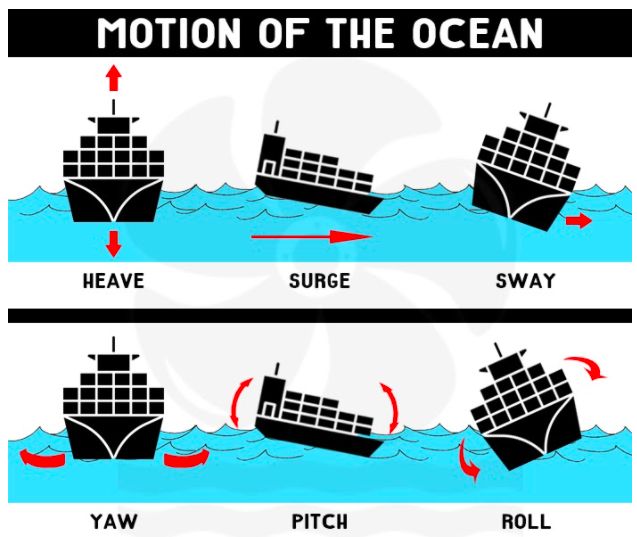After using ShipSavy to optimize your freight, it’s now time to prepare your cargo for the rigours of international shipping and transport. This blog post from Shipping and Freight Resource will point you in the right direction to give your precious cargo, every chance to arrive safely…ShipSavy.
For businesses that ship internationally, return of goods due to damage in transit can be a huge burden in terms of time and money. Here are 6 tips to prepare your cargo for international shipping using worldwide parcel delivery services.
1) Make sure your goods are ready for the pressures of international shipping
First and foremost, you should analyse how protected your goods are throughout the entire journey. This is particularly the case for larger goods.
It�s not just about making sure that the goods are protected, but that it is ready for what international shipping throws at it.
This means you should make sure your goods are stackable. Especially in the case of LCL cargo where it may be the case that your goods will be shipped with a range of other goods. It�s important they are both protected and also able to be placed alongside, on top and against other goods without being damaged.
Make sure your goods can also withstand being handled, perhaps by a forklift. It�s likely in many international shipping deliveries that your goods will be loaded lifted by a forklift for further loading/stacking or onwards on its journey � you need to make sure it is ready for safe handling. If�your goods are being sent by plane, make sure it can deal with tilting � this will occur most notably during take-off�and landing. Think ahead and make sure everything inside the packaging is tightly compacted to deal with this scenario.
If your goods are being sent by sea, make sure it can deal with the motion of the ocean. While at sea, a ship can move in 6 different ways as shown below.
If your goods are being sent by road, make sure your goods are sufficiently packaged to withstand vibration or shocks during road transport and mechanical handling. Your goods shouldn�t be so fragile when packed that this could cause serious damage to the goods.
�2) Get The Packaging Right
If you are sending parcels internationally, investing in double-walled or reinforced parcel boxes should be a new standard for your business at a minimum. The additional protection this type of packaging provides is well worth the investment, and is a straightforward method to minimise damage during transit. This�can also be helped by ensuring fragile goods are labelled as such on the exterior of the packing so couriers know clearly the care with which they should be handled.
If you are sending larger goods, consider palletising your goods, whether that�s for part or full shipping. This will improve the structural security of your larger and heavier goods, and make them well prepared for what international shipping has in store. This can also be aided through the use of edge protectors or paperboard to further protect your goods.
For those boxed or palletised goods, you might also want to consider shrink wrap or banding and strapping your goods together as part of a full/part shipment. This not only helps the goods remain sturdy as a single structure, but shrink wrapping helps protect against rain and other environmental damage on the journey.
3) Don�t Forget Internal Packaging and Taping
Now you�ve upgraded your parcel boxes and palletized, it�s key not to underestimate the importance of internal packaging. Using packing peanuts or air cushions are a great way to fill the empty space in parcel boxes � with more substantial internal packing needed for those bigger goods to minimise the empty space inside.
No matter how sturdy your box is, if you�re putting small and/or fragile goods inside without filling the surrounding space, you are massively increasing the likelihood of damage. This is especially the case if the goods are going on a long distance journey, or is being handled by multiple couriers, where it may be knocked side to side. You could also consider using the box-in-box packing method, where the box containing the goods are packed inside a larger box, with the surrounding space filled in.
What�s also important is making sure that the box edges are taped using the H-taping method whereby the edges and seals of the box are secured with high-quality packaging/parcel tape.
Too many businesses go to great lengths to secure their goods in sturdy boxes, only to use cheap tape which causes the goods to come loose or lack protection during transit. Avoid this if you want to avoid returns.
�4) Check the max weight of your goods
Weighing your goods and making sure you are choosing parcel packaging that is suitable for the weight and size of your goods is very important. Choosing a box that can�t handle the weight of the item will make damaged packaging and accidents when the goods are being carried more likely.
This is especially important if you are looking to send large or heavy parcels, which, due to their sheer weight, need boxes or crates and protection that are built to handle heavier goods. This is so they can get from A to B undamaged, rather than compromising with weaker packaging that merely �does the job�, but falls short by the time the customer gets the delivery.
�5) Choose Functionality Over Looks
There are many packing options which prioritise looks over protection. Softer packaging such as sacks and baskets are growing in popularity in many industries. While the customer might like how the goods are delivered, it means little if the item inside is damaged or broken entirely.
If you are considering using more ornate or softer packaging, make sure that first of all the packaging does the job of protecting the item. This isn�t just about the walls of the packaging, but how the entire package is secured and held together to prevent tampering or theft.
When using international shipping, consider shipping goods in sturdy packing to an interim destination. The goods then could be packed in the softer, but protective, packaging closer to the destination to ensure the goods are protected for as much of the journey as possible.
�6) Listen to Your Customers
And finally, and most importantly � listen to your customers! Take a look at review sites and your own customer feedback about your international shipping delivery services. If customers are telling you that goods arrive damaged or missing, take extra efforts to understand why your packaging may not be working and improve it.
Don�t assume your packaging is fine just because you don�t hear anything from customers either. While the item might have arrived undamaged, the packaging could have been worn, water-soaked or torn in transit, even if they don�t ask for a refund.
Understanding your customers is particularly important if you are considering launching a new product with potentially complex packaging requirements. Understanding your weak points and where your current packaging falls short can help you plan and prevent losses with new products ongoing.
Consider following up with customers to get their thoughts on how their parcels or international shipments arrive and if it was to their expectations. It can save your business hassle and unhappy customers in the future!
https://shippingandfreightresource.com/6-tips-to-preparing-your-cargo-for-international-shipping/
We know ShipSavy will save you Time and Money at any stage of your business! Click this link to see which pricing plan suits you Today!
Check out our other blog posts for more hints and tips to help your Amazon FBA business succeed.
Stay updated with all the latest news by subscribing to our monthly newsletter.�




 Amazon
Amazon ShipSavy Pty Ltd
ShipSavy Pty Ltd